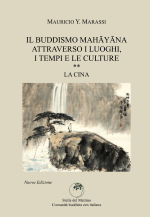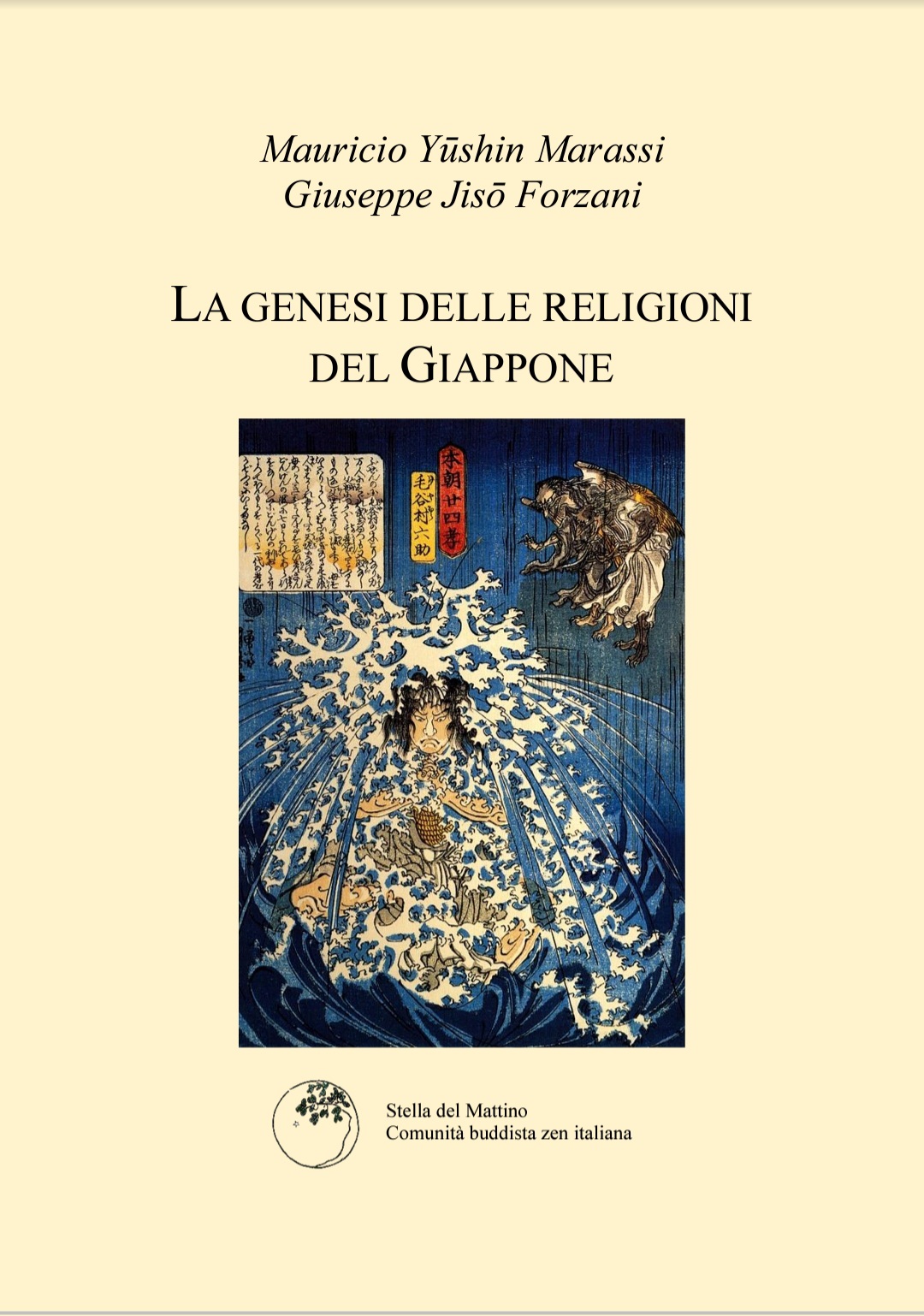The relation between faith and artistic inspiration, between religious experience and symbolic communication that had remained subtle and implicit in early Buddhism, deepened, was clarified and was made explicit by the development of Mahayana 1. The Buddhism of the Great Communion or the Great Vehicle placed great emphasis on the essential unity of all lives and all phenomena, and, as a result, underlined the critical role played by friendly benevolence and mutual cooperation in men’s efforts towards salvation. The impossibility of describing reality as a whole, “from the outside”, coupled with the limits of verbal expression when it addresses matters of the spirit, inspired a very specific form of literature, one of the best – but by no means the only – example of which is the Lotus Sutra, or Saddharmapundarika sutra 2.
Let’s look at this Sutra. The first important novelty represented by this sutra as compared to earlier texts, was that it was composed in a hybrid Sanskrit, when all earlier sutra were written in Pali or, more probably, in maghadi, the ancient language of Bihar.
In addition to the use of a new language and, perhaps, a new alphabet, this sutra, like most of those belonging to the Mahayana tradition, differs from the Buddhist literature of earlier times for the wide use of a type of language called “intentional”3. This language is very special in that it aims to keep itself at a distance from the contextual substance that it purports to communicate. The reason is that it intends to transmit meanings that cannot be conveyed by words or concepts. The sutra describes it in these words: “teaching beyond doctrine and thinking”.
As a way of expression, intentional language is similar to that used in parables – at least in those parables which work through metaphor and paradox. Like these parables, intentional language tries to stamp directly into readers’ and listeners’ minds meanings that are different from the literal meanings of the words it employs. To give an example, pay attention to what happens to us when we read: “Let the dead bury their dead”. It is clear that this sentence does not mean that those who officiate or participate in a burial ceremony are actually dead, or that this ceremony is wrong in some ways and should be called off. On the contrary. This sentence raises another idea in the minds of the readers; it contrasts those who give in to the inducements of this world with those who have converted and turn towards the life of the spirit, a life which is so free from the world that there is “nowhere to lay their heads on” 4. This contrast is expressed by the verbal trick of calling “dead” the former, alive as they may be from world’s point of view.
In the highest expressions of this art, form and content overlap. Those who read these sutras are affected – and sometimes turned off – by the rhythm and timing of story-telling, the abundance of details, the endless repetitions, the meticulous and painstaking lists of the bystanders and participants in the assembly, of the types of tree, bushes and herbs — drenched by the only, tasteless, water of the teaching – that constitute the material out of which these sutras5 are made. However, we would be wrong to assume that this is all fluff and “form” and ignore it. If the only thing we try to do is grasp the concept that we believe this form is there to convey, entire sections of the sutra vanish into thin air. They melt away like snow in the sun. If I were to put this idea in a somewhat stark language I would say that since Buddha’s teaching does not consist in an idea, or in a concept or in a particular doctrine, the writing that conveys it must also shed all ideas, concepts and doctrines. Which explains, in my eyes at least, the “fluff”.
To say it in another way: the entire body of Buddha’s teaching aims at starting a process; not any process, to be sure. A specific process in a specific way. But a process nonetheless. Therefore, since the sutras are tools with which he pursues this aim, they too must contribute to start that process, or to keep it alive, consolidate and strengthen it.
In these sutras therefore, we would look in vain for the information, or the concepts that we are accustomed to finding in the sapiential texts of our culture. They are there very seldom. What we must do is to read carefully, and perceive attentively what is happening to us as we read. Which is what we do – or should do— when we look admiringly at a statue or a painting. The perception of their meaning should not be veiled by arbitrary rational activity. When I think about music, I cease to listen to it.
The Lotus Sutra stands out in the Buddhist literature of all times for its purest idealism coupled with its highest artistic achievement. A good part of the Buddhists aesthetics that developed in the course of the centuries took their cue from or was inspired by this text, and particularly by its novel and daring use of the intentional language embedded in parables and hyperboles. Buddha’s eternal and cosmic dimension is represented through a series of special effects that dissolve time and space in the crowded presence of every kind of living being, vegetable, animal and supernatural. Attending Buddha’s assembly, we see the mythical figures of the Hindu culture: spirits, deities and ghosts. They are shoulder to shoulder with princesses, curious bystanders and great kings with their trains of thousands of pages and servants accompanied by elephants adorned with multicolored canopies. Then, nearer the center of the scene appear the great disciples and the most famous bodhisattvas. And the whole pack swishes through thousands of galaxies and numberless universes over periods of time of such an extension that hundreds of billion years are like the batting of an eyelid compared to them.
The imagination becomes so dazzled that the divine dimension implicitly attributed to Buddha in this vast mise en scéne becomes an unimportant detail. The immensity of the phenomenal world represents the eternal and infinite, and, therefore, the divine. It stands for and suggests, something beyond. The text conveys this sense of awe with a subtle humor; never overwhelming like a scent, more like a light fragrance.
| « Early Buddhism | Tantrism » |
[1] The new Buddhism, as mahayana has also been called, started in earnest after the second century b.C.
[2] Literally: the sutra of the white lotus of the good law.
[3] In Sanskrit, sandhabhasa.
[4] Matthew 8,20
[5] In particular, the Lotus Sutra and the Vimalakirti Sutra or Vimalakirti nirdesa sutra.
Se volete, lasciate un commento.
You must be logged in to post a comment.







